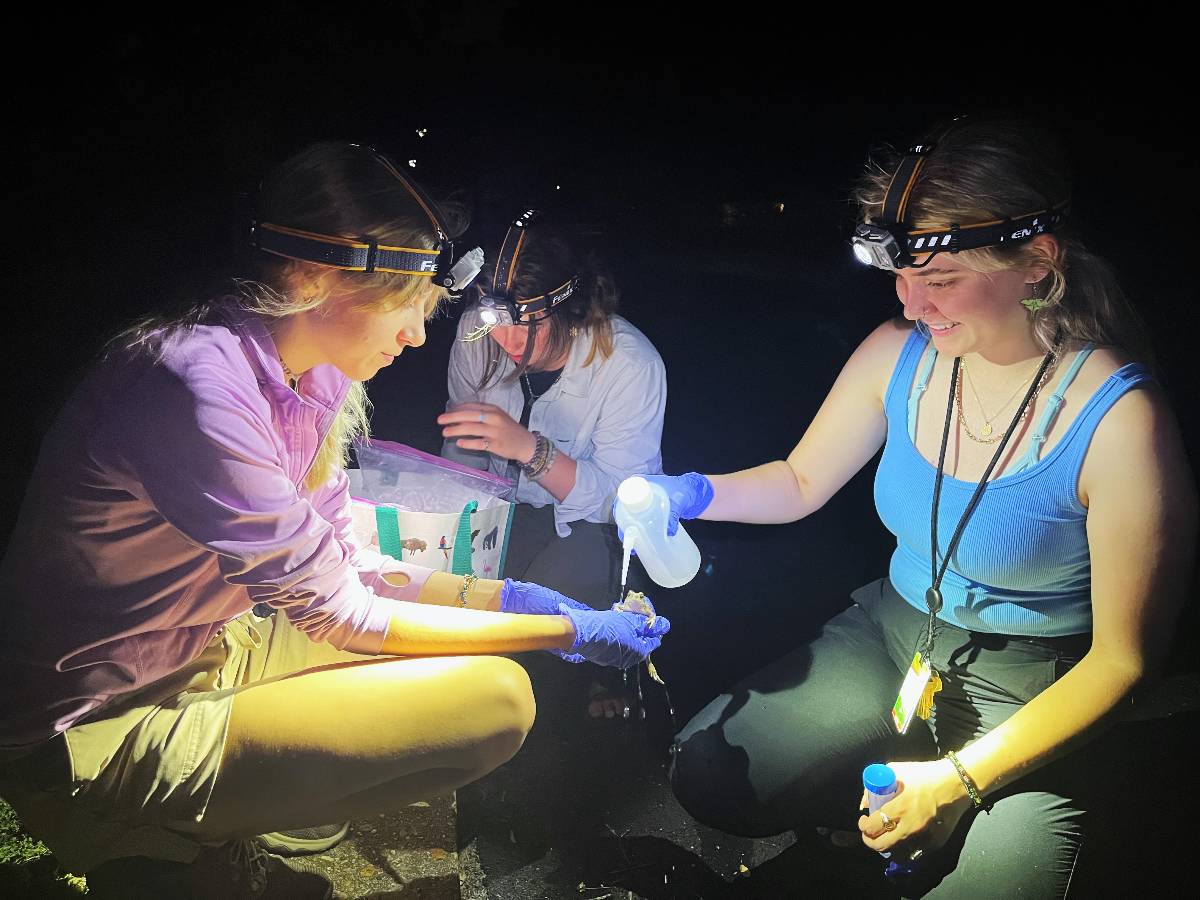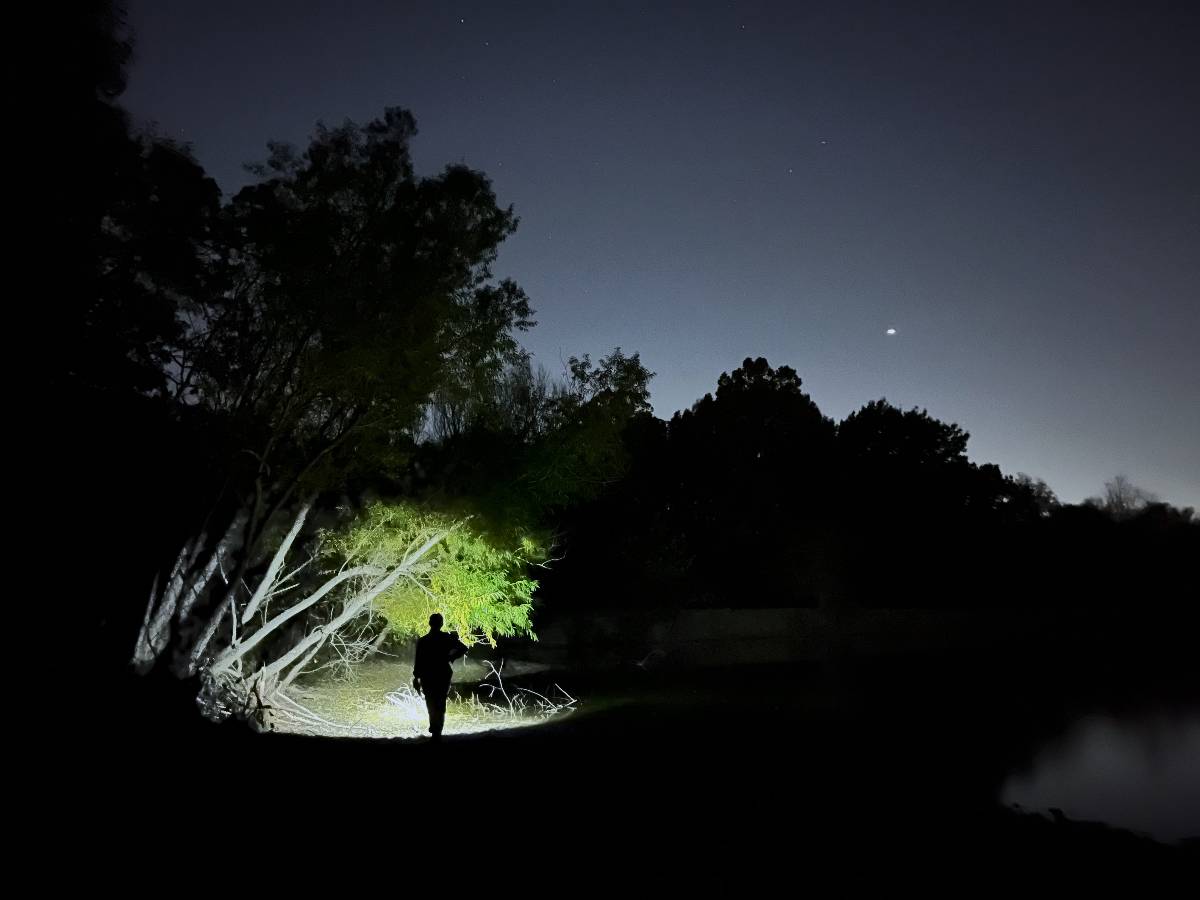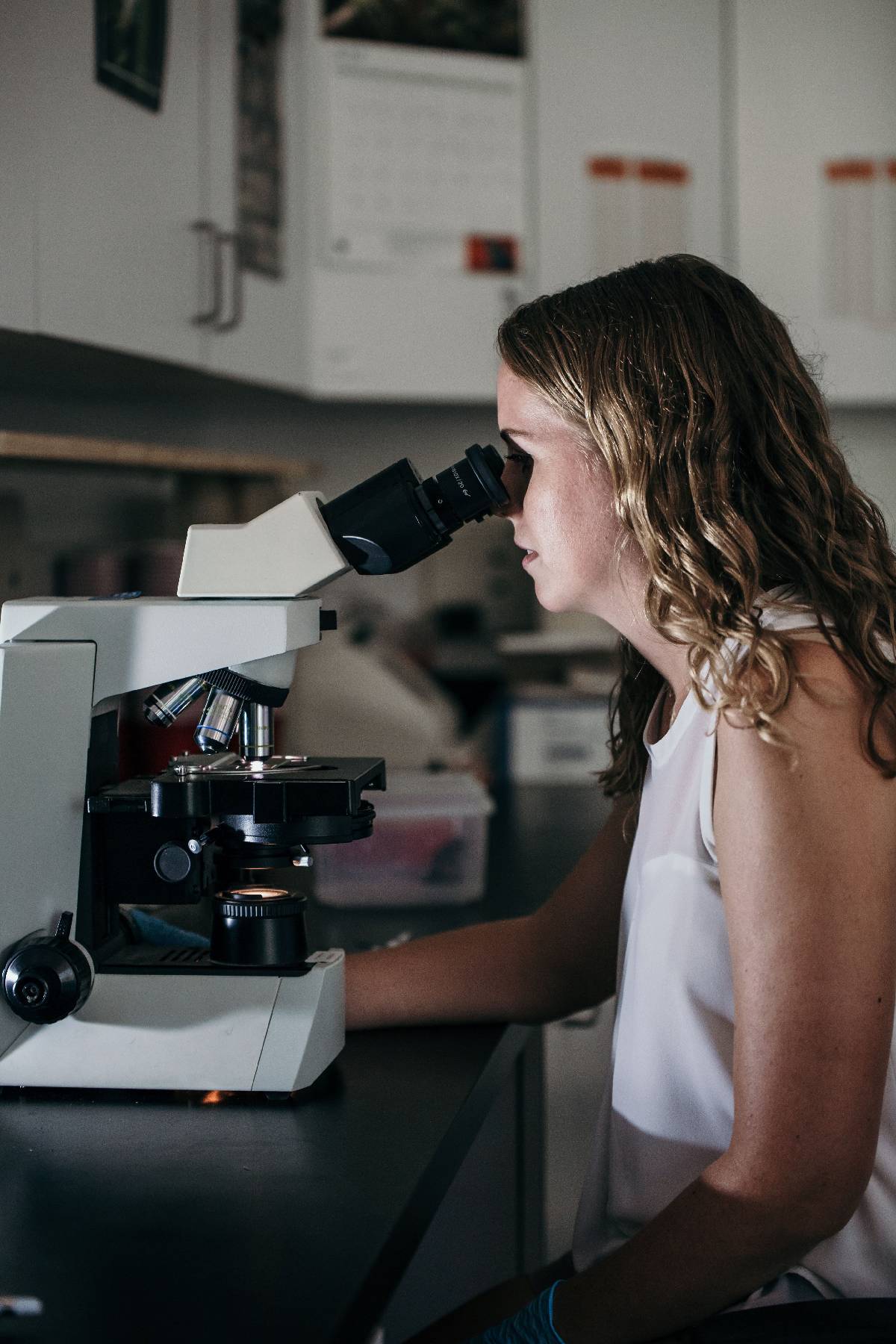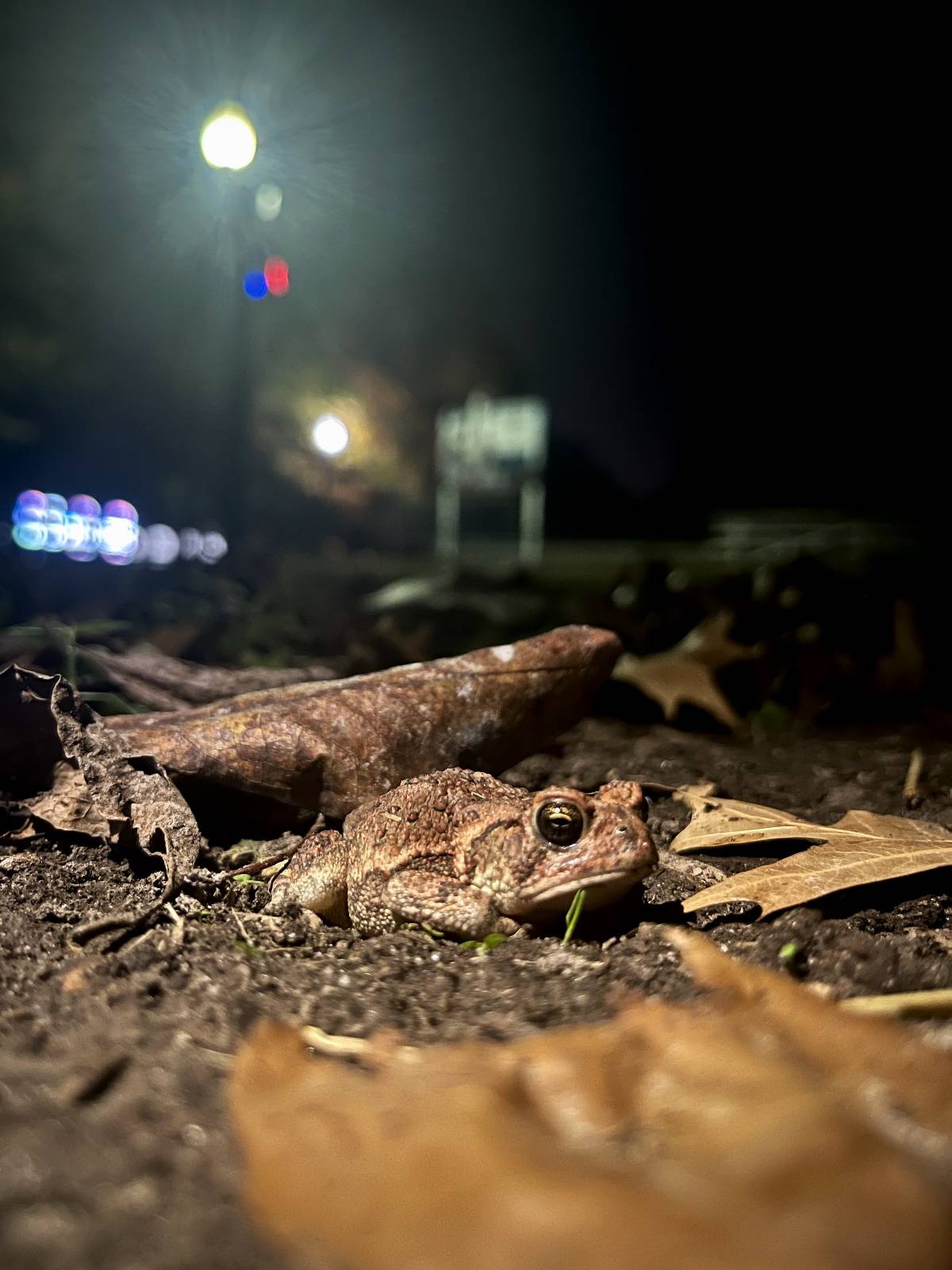Josh's Frogs
Memphis Zoo: Amphibian Parasite Study

Research Interns Madelyn Albritton, Jamie Bolan, and Rebecca Davis with a Fowler's toad collected at the Memphis Zoo. Photo credit: Sinlan Poo.
Memphis Zoo won a Josh's Frogs 2023 Amphibian Conservation Grant for their project, Amphibian Parasite Comparisons Between an Urban Zoo and Natural Forested Areas. We interviewed the Zoo's Curator of Research, Sinlan Poo, to learn more about this project.
How do you plan to use the grant money?
The grant money will be used to support field sampling efforts (field equipment and supplies) and lab analyses of amphibian fecal parasites.
What does winning this grant allow you to do that you might not have otherwise?
Having the support of this grant will allow us to increase our sampling efforts and complete our lab analyses for amphibian parasite identification.

Research Intern Madelyn Albritton surveying for Fowler’s toad at one of the field sites around Memphis. Photo credit: Sinlan Poo.
When do you expect to see results from this? What are you hoping they look like?
We hope to see if wild toads living in urban settings, such as zoos, that are exposed to different environments (not to mention different species composition in these environments) have the same parasite composition as toads that are living in more natural, forested areas.
How will this impact amphibian conservation specific to this instance?
We know very little about parasite infections and even less about co-infections (having two or more parasites within the same host species) of different parasites in amphibians. Gaining a better understanding of what is driving parasite infections and co-infections across urban and forested sites will allow us to better predict how amphibians may respond to different risk factors.

Parasites are identified in the lab at the Memphis Zoo, with the help of collaborators and zoo hospital staff. Photo credit: Abbey Bratcher.
What are the larger implications of your work?
Collectively, the amphibian research at the Memphis Zoo is focused on using model species to better understand amphibians living in captivity, in urban settings, and in their natural environment. The knowledge gained from these studies is then used to inform on-the-ground conservation efforts, such as creating captive refugia for endangered amphibian species, increasing the capacity of zoos in terms of captive-breeding and head-starting amphibians, and reintroducing these animals back into their native habitats in the wild.
What message or information would you like to share with the reptile and amphibian pet community?
There are lots of common amphibian species that can be found in urban areas! What we learn from these animals, as well as animals in captivity, can be very informative to conservation efforts in the field.

A wild Fowler's toad at the Memphis Zoo, coming out at night after the guests have left. Photo credit Sinlan Poo.
How would someone make a donation to your organization?
If anyone would like to support the work that we do as well as support the next generation of herpetologists, I’d encourage them to donate to the “Global Women in Herpetology Project (www.womeninherpetology.com)", which is a project I co-founded that highlights women from diverse backgrounds from over 50 countries from around the world who are working with amphibians and reptiles. The project supports scholarships for students from underrepresented countries and regions, allowing them to present their research in international conferences and helping further their careers in herpetology.
For donations to the Memphis Zoo, you can go to https://www.memphiszoo.org/conservation-six
Where could someone learn more about your project?
Information of my projects can be found on my website (www.sheilapoo.com) or the Memphis Zoo’s website (https://www.memphiszoo.org/conservation).
Anything else you feel we should know or discuss?
This started as a summer project led by two research interns at the Memphis Zoo, Madelyn Albritton and Jamie Bolan (they are in the photographs submitted with this grant application). Both are still working on this project and will be lead authors in the scientific papers that we hope will result from our findings. It’s great to have student-led projects and we are so happy to be able to highlight all the work that Madelyn and Jamie have put into this project.
